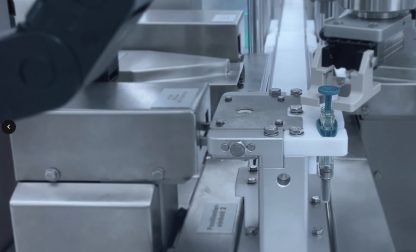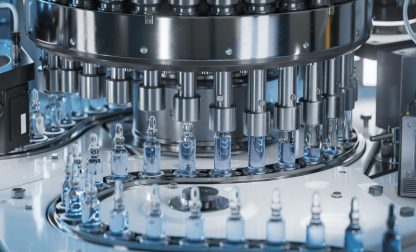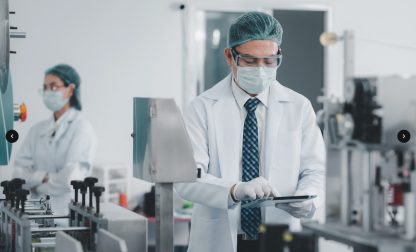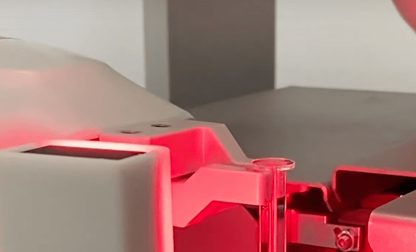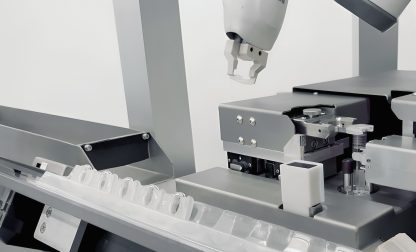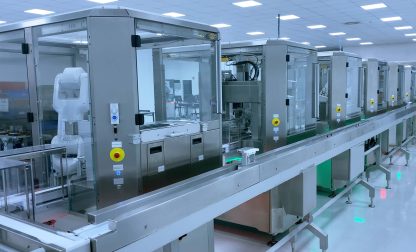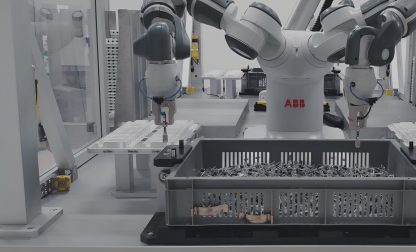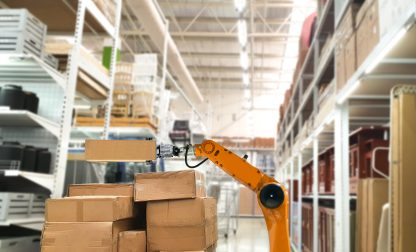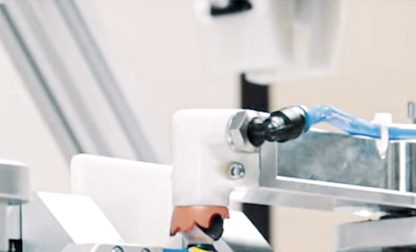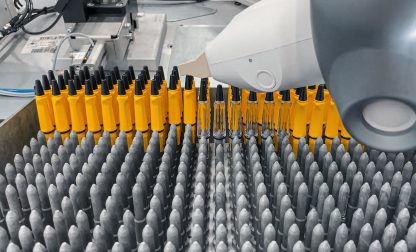3 trends driving automation in the life science industry

Digitization is nothing new, and neither is AI. However, different industries have been adopting and adapting to these new technologies at various levels of urgency and speed. While certain fields have started switching to automation decades ago and are keeping up with, if not spearheading, new developments, others are somewhat lagging behind.
Biopharma is one of the industries lagging behind, and this may come as a surprise: After all, it is a field known to be forward-thinking and exposed to constant change, introducing new developments in an ever speedier manner and being challenged by ever new issues, or, in other words, the emergence of new diseases. Despite this, the biopharma industry has been surprisingly slow to embrace new technologies even though their implementation not only would but could be to its general advantage.1
This being said, there are several examples of biopharma companies that have successfully experimented with and implemented process automation technologies. And the numbers of businesses making the switch are bound to increase: The current state of geopolitics – war and crises – is a catalyst for embargos and a pressing shortage of qualified manpower, while the inexorable change in demographics is another driving force for automation in the pharmaceutical industry. For not only are advanced technologies able to address the labor bottleneck but they will also help streamline processes and push volumes as well as quality to the next level.
1 Demographics
The era of the baby boomers, at least those dominating the workforce, is coming to an end. Where there used to be an abundance of manpower, there is now a shortage of skilled labor, and those retiring today have a higher average life expectancy than any generation before them.
At the same time, younger generations are entering the workforce later in life – a trend that is here to stay – as they take longer to study and finish their education. In other words: Stunted growth of the global labor force is met by an increased demand for medical drugs and therapies, both established and novel ones, to address the many ailments that come with superannuation and overpopulation.
These are all factors contributing to rates of automation that are reaching unprecedented levels. The global industrial automation and control systems market size, according to studies, was valued at USD 172.26 billion in 2022 and is expected to maintain a compound annual growth rate (CAGR) of 10.5% from 2023 to 20302. Not only will it help address and counteract shortages in terms of human labor but also help streamline and expedite repetitive tasks and even complex processes.
Automated production runs will be able to keep up their work around the clock and allow skilled professionals to deal with tasks that require expertise and expert knowledge, both of which cannot – as least as of yet – be replaced by technology.
The bottom line is: Automation has become integral to meeting the evolving challenges and opportunities in the healthcare, medical and pharmaceutical sectors with all their dynamics. Changing demographics, including an aging population and the increasing demand for personalized medicine, are driving the life sciences to fully embrace and adopt automation in order to improve efficiency, quality, and responsiveness to healthcare needs.
2 Decentralized production
While recent years, if not decades, saw a move to centralized production across many sectors and industries, there are several factors contributing to a turnaround of that trend. Apart from current developments, where regional crises and wars are leading to embargos, production standstills and delays, there are several other reasons for this obvious change.
Those include an increased consumer demand for customization and faster delivery times on the one hand and advancements in technology as well as the need for more flexible supply chains – caused, for instance, by geopolitical instability – on the other.
By facilitating the production of goods and services in smaller, more localized, and increasingly automated, facilities, decentralized manufacturing can address the needs arising from ongoing geo- and sociopolitical changes.
A move towards decentralization not only comes with benefits but also presents manufacturers with new opportunities: By allowing them to create more agile and flexible production systems with an improved ability to respond to changes in demand and supply it reduces their reliance on traditional supply chains with their vulnerability to disruptions such as geopolitical instability.
In addition, decentralized manufacturing and modular, scalable platforms push the speed to market and enable manufacturers to produce a range of quantities rather than just large-scale, which is particularly interesting when it comes to personalized medicine. High mix/low volume (HMLV )is a development playing into this, as it allows a great variety of different products to be efficiently customized – be it to specific patients or to regional markets – without the need for disrupting the entire production process.
HMLV automated manufacturing is exactly the field that a growing German automation company is dedicated to. Since 2012, ESSERT Robotics has been specializing in automation solutions, collaborating with clients in the life science industry to develop tailored solutions for low volume manufacturing.
ESSERT Robotics offers flexible and scalable platforms, catering to the specific requirements of the pharmaceutical sector. Through increased automation, they enable decentralized production to benefit from more standardized, efficient, and dependable processes, resulting in enhanced productivity.

3 Personalized medicine
There has been a lot of talk about personalized medicine throughout this article, and for good reason: As healthcare becomes more personalized, the pharmaceutical industry will need to shift even more towards developing tailored treatments for individual patients. Automation, including high-throughput screening and robotic drug synthesis, is crucial for efficiently producing such customized medications that are based on factors such as the respective patient’s genetic makeup.
While still early in its development, personalized medicine is constantly evolving; there have been remarkable results in the treatment of severe illnesses that thus far were untreatable. However, the scalability of these products is not yet up to par, and production is still challenging, not least due to the enforcement of strict standards by various regulating bodies.
This results in labor-intensive and costly manufacturing, which is why more and more developers are switching to advanced technology and automation to help them scale their production and ease bottlenecks, but also to rule out human error.
Again, this is where German automation provider ESSERT Robotics comes in: Their solutions enable the automation of entire production processes and are able to handle various assembly modules. These factors are exactly what is needed in order to streamline production processes, reduce cycle times as well as production costs, and enhance throughput. In addition, thanks to the Workstation’s modular design, various tasks and process steps can be automated individually and as per the manufacturer’s requirements – and all this without the need for an engineering degree.
The future of automation in life science industry
In conclusion, demographic shifts, and the need for customized, decentralized production is propelling the pharmaceutical industry toward the adoption of automation technologies.
The future holds the promise of even greater advancements, enabling innovative solutions for personalized medicine and highly efficient production processes.
Companies like ESSERT Robotics are at the forefront, offering tailored solutions to these specific needs. They dedicate themselves to streamline production, reduce costs, and enhance efficiency – with focus on low volume automation solutions.
Read more about automation in the pharmaceutical industry:
Pharma process automation: 5 reasons why it increases efficiency
Process automation simply explained
Pharmaceutical Automation: Innovations shaping an industry
Pharmaceutical automation companies: Top 10 suppliers you should know
What is lab automation?
High-Mix Low-Volume: Possibilities & Limitations
Sources:
- Automation and the future of work in the US biopharma industry, August 13, 2020, Laura Bremme Lucia Darino Brandon Parry and Kaixiang Teo https://www.mckinsey.com/industries/life-sciences/our-insights/automation-and-the-future-of-work-in-the-us-biopharma-industry ↩︎
- Industrial Automation And Control Systems Market Size, Share & Trends Analysis Report By Component Type (Industrial Robots, Control Valves), By Control System (DCS, PLC, SCADA), By Vertical, By Region, And Segment Forecasts, 2023 – 2030 https://www.grandviewresearch.com/industry-analysis/industrial-automation-market ↩︎
